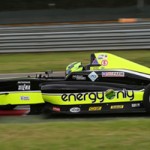F.1 – Road to Montreal
Formula 1 greets Europe and flies overseas to Canada, to the land of Gilles Villeneuve, Montreal. A special Grand Prix, which is run on a half-road half-permanent circuit, where pitfalls abound. An example: the weather conditions, with wind and temperatures ready to change quickly, putting then a strain on strategies and tyres. The track has low grip and Pirelli will bring Soft and SuperSoft tyres. In addition, the safety car is almost constantly present, as it made its entrance on track in 82% of cases.
Then, there are other significant variables. The layout requires a low downforce, with engines forced to have the throttle valve open to the maximum for 60% of the time, thanks to the second longest straight of the world championship, in which engines touch the 350 km/h, before a sudden braking, which provides strain on the entire brake system, together with five other hard brakings, located along the 4361 meters. About engines: after signing the new record by completing 6 consecutive GP with the same PU, Mercedes is preparing to bring on track a new unit, with the addition of 50 hp.
Let’s have a look also to gears and consumption. Traditionally, Montreal is one of the tracks with the highest rate of consumption. Compared to last year, also in this area, it has taken a big step forward, but it remains a good test circuit.
Hence, the unknown elements are not lacking. It will be worth to see this Grand Prix, considering what happened in Monaco. Mercedes has already made mistake, paying for the wrong strategy, even if the race in Montecarlo went “good”, in any case.
Once again behind the scenes meetings will animate the circus, as happened fifteen days ago. Carlos Ghosn and Berni Ecclestone met certainly do not discuss the Cannes Film Festival or the Casino, but certainly to talk about a future that looks so rosy, since it involves two teams such as Red Bull and Toro Rosso. Meetings will be about how to remedy decisions that might be striking.
Gian Carlo Minardi


